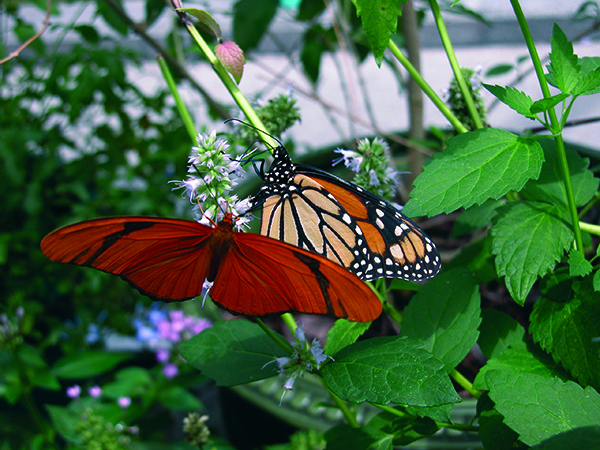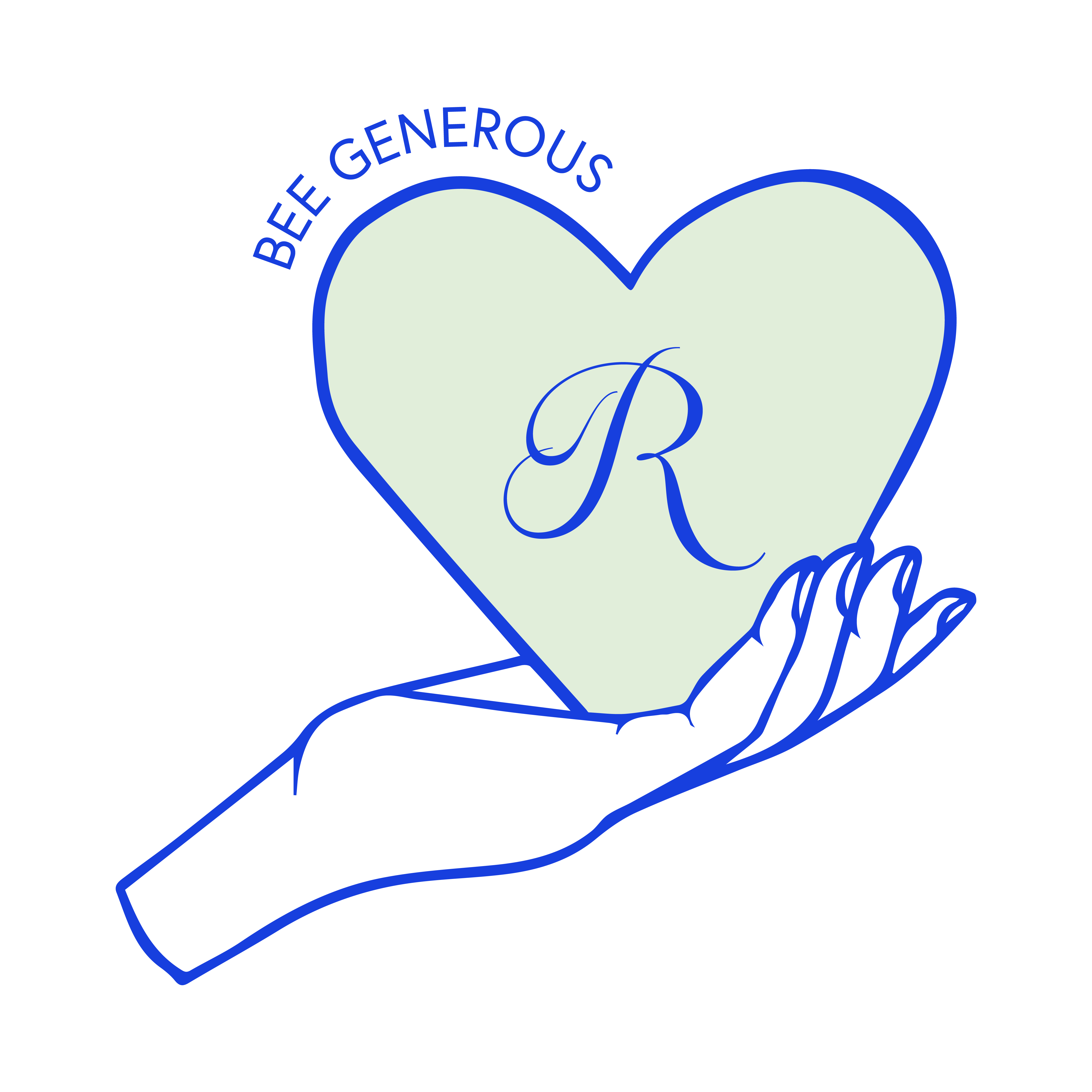Wearing a hot pink flowered shirt into the Queensland Australia butterfly garden was accidental genius. In two seconds, dozens of exotic butterflies nestled on my Lilly Pulitzer and launched my horticultural obsession to nurture a butterfly garden which I did last summer.
Lucky for me, Florida is a haven for butterfly gardeners. Whether you grow your own or visit one of the horticultural attractions, let your imagination take wing in designing your butterfly oasis.
Grow An Oasis
Whether you have a backyard or a patio, anyone can nurture a vibrant butterfly garden.
Know Your Local Butterfly: First, identify the species that are resident, transient and breed in your area and in the habitat you are providing. The next step is to identify the host (larval) Plants that your targeted butterflies rely on for laying their eggs and feeding of the emerged larvae. I planted milkweed, which attracts the Monarch caterpillar. Providing these host plants will ensure happy, thriving larvae and a sustainable butterfly population.
What To Plant
Step three is to identify the nectar plants for the butterflies you hope to attract. Planting both host and nectar plants means they won’t have to go far to eat and reproduce.
Butterflies will lay their eggs and feed on host plants such as aster, cassia, coral bean, gaillardia, milkweed, necklace pod, oleander, passion vine, pipe vine and verbena. Experts recommend choosing native varieties of host plants when possible, such as passiflora incarnata, lutea, multiflora and suberosa varieties of passion flower and asclepias curassavica, humistrata, incarnata, longiflora and tuberosa native varieties of milkweed.
Consider native plants that provide nectar for butterflies, such as the geiger tree, buttonwood, firebush, native lantana, wild coffee, necklace pod, beach sunflower and blue porterweed. Look for plants that have flat, cluster or spike flower shapes to support the butterfly’s footing while feeding in colorful hues (yellow, orange, white, blue, red, pink, purple).
Nectar plants that attract and feed adult butterflies include perennial favorites such as penta, lantana, butterfly bush, hibiscus, plumbago, railroad vine, black-eyed Susan, shrimp plant and daylily. Colorful annuals, among them sunflower, salvia and zinnia, are good choices, too. Even common herbs attract butterflies, including basil, bee balm, chives, dill, fennel, mint, oregano, parsley, pineapple sage, rosemary and thyme.
Add Butterfly Decor
Not ready for a butterfly garden? Enjoy butterfly-themed décor for your garden including butterfly watering sticks, solar lights, stakes, wind chimes, optic LED party lights and other garden ornaments. You can find them in local garden stores and nurseries, as well as on Amazon, Obsession with Butterflies (bird feeder, garden thermometer) and Gardener’s Supply Company (woven bamboo butterfly house).
Visit A Butterfly Garden
Looking for ideas? In addition to local garden and butterfly clubs, butterfly watching and identification walks, you can pick up tips at these glorious gardens and from your local chapter of the North American Butterfly Association. (NABA).
Florida Botanical Gardens: As you walk through the lush flowering arbor, you discover an oasis of fluttering butterflies with both nectar and host plants. Sighting a Monarch on a purple coneflower, watching pollinating bees and moths on tropical salvia, and observing the visiting hummingbirds, inspires an awe of nature that brings calm and joy! A path of mosaic tiles wanders through the garden. Identification signs and butterfly photos depict the butterfly lifecycle. Both children and adults enjoy the whimsical sculptures and musical instruments. This butterfly garden is both an educational and stress relieving adventure.
MOSI BioWorks Butterfly Garden: You can view or step inside this unique outdoor butterfly enclosure designed for West Central Florida species as they feed on native and Florida-Friendly nectar plants. Open year-round, but check the MOSI daily schedule for weather-dependent exhibit times.
Marie Selby Botanical Gardens: This 8.5 acre tropical oasis located on the shores of Sarasota Bay features a Butterfly Garden as well as succulents, orchids, bromeliads and currently, a Chagall-inspired “Flowers & The French Riviera” garden exhibit.
Butterfly Rainforest at The McGuire Center for Lepidoptera Florida Museum of Natural History: Get close and personal with exotic, vibrant butterflies fluttering atop a lush tropical canvas of foliage and flowers. Explore the screened vivarium houses subtropical and tropical plants and trees to support 55 to 65 different species and hundreds of free-flying butterflies. Guests can stroll through the Butterfly Rainforest on a winding path and relax to the sounds of cascading waterfalls year-round. Inside, the McGuire Center public exhibits gallery showcases the “Wall of Wings,” which captures the eye with thousands of preserved and photographed butterfly and moth specimens.
Butterfly World: As the first butterfly house, it is the largest in the world. Here you will discover butterfly aviaries, botanical gardens, a working butterfly farm and home to the North American “Bring Back the Butterflies” Campaign, a program whose goal is to educate and supply free butterfly gardening materials specific to each region, to anyone interested.
For more information about visiting a garden:
Florida Botanical Gardens | 727-582-2100 | www.flbg.org
MOSI BioWorks Butterfly Garden | 813- 987-6000 | www.mosi.org/exhibits/butterfly-garden
Selby Botanical Gardens | 941-366-5731 | www.selby.org
The McGuire Center for Lepidoptera and Biodiversity | 352-846-2000 | www.flmnh.ufl.edu/index.php/mcguire/home
Butterfly World | 954-977-4400 | www.butterflyworld.com
[uam_ad id=”1443″]




